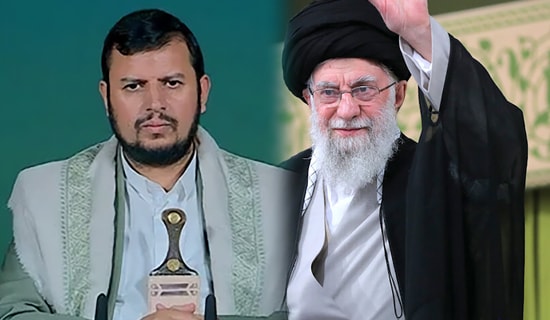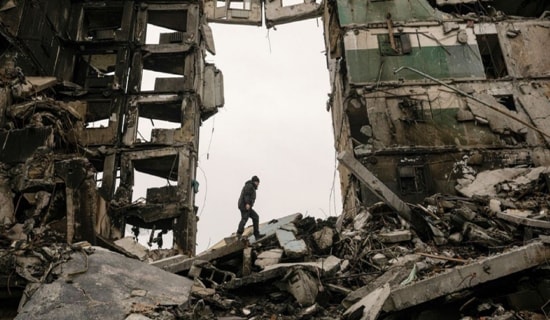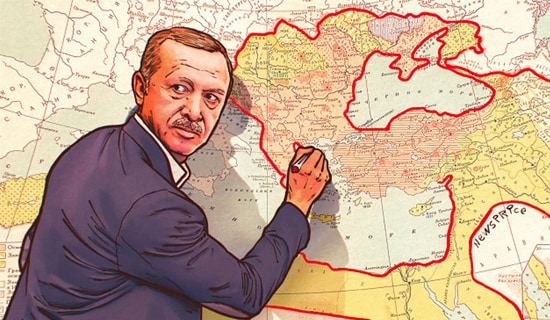[1] This series was authored by MEMRI researchers H. Varulkar, N. Mozes, B. Chernitsky, Z. Harel, B. Shanee, and Y. Kahan.
[2] The books for grades 1-10 were written and published by the Eshraq Company under the oversight of an Education Ministry committee headed by Dr. 'Abdallah 'Ali Al-Marri, director of the Ministry's Islamic Education Department. It should be noted that these books are labeled as an experimental edition. The textbooks for grades 11-12 are somewhat different in design and production details: they were printed by the 'Obekan Education Company in 2016, and are not labeled as experimental. They too were overseen by an Education Ministry committee headed by Dr. Al-Marri and by Dr. Osama Mahmoud Qana'a, who is in charge of Islamic Education standards at the ministry. They also specify the names of the committee members responsible for authoring each of their chapters.
[3] Islamic Education For Grade 6, pp. 65-66.
[4] Islamic Education For Grade 6, p. 65.
[5] Islamic Education For Grade 6, p. 66.
[6] Islamic Education For Grade 8, p. 22.
[7] Islamic Education For Grade 8, pp. 24-25.
[8] Islamic Education For Grade 8, p. 114.
[9] Islamic Education For Grade 8, p. 116.
[10] Islamic Education For Grade 8, p. 116, 118.
[11] Islamic Education For Grade 8, p. 116, 117.
[12] Chapter IV will deal with the antisemitic messages and portrayal of the Jews as traitors, infidels, and schemers in Qatar's Islamic Education school textbooks.
[13] Islamic Education For Grade 8, pages 75-80.
[14] Islamic Education For Grade 9, pages 108-111.
[15] Islamic Education For Grade 9, page 112.
[16] Islamic Education For Grade 12, p.182.
[17] Islamic Education For Grade 12, p. 86.
[18] Islamic Education For Grade 12, p. 98
[19] Islamic Education For Grade 12, p. 99.
[20] Islamic Education For Grade 12, p. 116; Quran.com/2/154.
[21] Islamic Education For Grade 12, p. 163; Quran.com/4/69.
[22] The verb used in Arabic is ibtada'a, connoting an innovation forbidden by Islam.
[23] The textbook erroneously says "World War II."
[24] Islamic Education for Grade 9, p 20.
[25] Islamic Education for Grade 9, p. 26.
[26] Islamic Education for Grade 9, p. 27.
[27] Islamic Education for Grade 9, p. 55.
[28] Islamic Education for Grade 9, pp. 56-58.
[29] Islamic Education for Grade 10, p. 42.
[30] Islamic Education for Grade 11, pp. 44-50.
[31] The Arabic term (muwala) means to form an alliance, become friends with, support.
[32] Islamic Education for Grade 11, p. 26.
[33] Islamic Education for Grade 11, p. 32.
[34] Islamic Education for Grade 11, pp. 29-31.
[35] Islamic Education for Grade 11, pp. 52-53.
[36] Islamic Education for Grade 11, pp. 54-55.
[37] Islamic Education for Grade 11, pp. 55-56.
[38] Islamic Education for Grade 11, pp. 114-115.
[39] Islamic Education for Grade 11, p. 56.
[40] Islamic Education for Grade 11, p. 117.
[41] Islamic Education for Grade 10, p. 59
[42] Islamic Education for Grade 10, p. 146.
[43] Islamic Education for Grade 10, p. 149.
[44] Islamic Education for Grade 10, p. 151.
[45] On this, see MEMRI Inquiry & Analysis No. 442, Arab and Islamic Antisemitism, May 29, 2008.
[46] Islamic Education for Grade 10, p. 181.
[47] Islamic Education for Grade 10, p. 182.
[48] Also called the Battle of the Confederates (Ghazwat Al-Ahzab), after the tribal factions that opposed Muhammad.
[49] After migrating to Medina in 622, Muhammad drafted the Charter of Medina, with the aim of regulating the relations between the muhajiroun (Muhammad's supporters who came with him from Mecca to Medina), and the Ansar (Muhammad's local supporters in Medina), and between these two groups and the non-Muslim residents of the city, including the Jews. The main Jewish tribes in Medina – Banu Qunayqa, Banu Nadir and Banu Qurayza – were apparently not party to the charter, but Muhammad signed pacts of non-aggression with them. Despite this, the Banu Qunayqa were exiled to Syria and the Banu Nadir to Palestine and Khaybar, and the Banu Qurayza were killed. See: Michael Lecker, Muhammad and the Jews (Jerusalem: The Ben Zvi Institute, 2014), 66-74, 213-216; Aliza Shnizer, "Muhammad: The Man and Milestones in His Life." In: Meir Bar-Asher and Meir Hatina (eds.), Islam: History, Religion and Culture (Jerusalem: Magness Press, 2017), 48-53. On the Charter of Medina, see also MEMRI Inquiry & Analysis No. 1379, Palestinian Authority Schoolbooks For 2017-18: Increased Indoctrination To Jihad And Martyrdom, March 16, 2018).
[50] Islamic Education for Grade 7, p. 83.
[51] Islamic Education for Grade 7, p. 84-87.
[52] Islamic Education for Grade 7, p. 88.
[53] Islamic Education for Grade 7, p. 92.
[54] Islamic Education for Grade 8, p. 75-76.
[55] Islamic Education for Grade 8, p. 76.
[56] Islamic Education for Grade 8, p. 77-78.
[57] Islamic Education for Grade 8, p. 78-79.
[58] Islamic Education for Grade 8, p. 80.
[59] Islamic Education for Grade 8, p. 83.
[60] Quran 5:46; the word "Allah" does not appear in the verse.
[61] Quran 9:30 states: " The Jews say, 'Uzair is the son of Allah.'" 'Uzair is usually identified with the Biblical Ezra.
[62] Islamic Education for Grade 11, p. 135.
[63] Islamic Education for Grade 11, p. 135-136.
[64] Islamic Education for Grade 7, p. 141.
[65] Islamic Education for Grade 7, p. 136.
[66] Islamic Education for Grade 11, p. 135.
[67] Islamic Education for Grade 11, p. 138.
[68] Orientalism is defined as "scholarship, learning, or study in Asian subjects or languages," particularly the Middle East. Since the publication of Edward Said's Orientalism in 1978, the term "Orientalism" is "often used with negative connotations of a colonialist bias underlying and reinforced by such scholarship." Merriam-webster.com/dictionary/Orientalism.
[69] Islamic Education for Grade 11, p. 165. The "righteous forefathers" is a reference to the first three generations of Islam, which are considered the paradigm of righteousness.
[70]Carlyle's book On Heroes, Hero-Worship, and The Heroic in History (1841) included a chapter on the Prophet Muhammad.
[71] The chapter incorrectly translates the title as "The Arabs' Sun Over The Occident." Hunke claimed that the Arabs' influence on the West was the first step in liberating Europe from Christianity.
[72] An orientalist painter and co-founder of the Société des Peintres Orientalistes Français, also translated Arabic literature into French.
[73] Islamic Education for Grade 8, p. 135-136.
[74] Islamic Education for Grade 8, p. 137.
[75] Islamic Education for Grade 8, p. 137-138.
[76] Islamic Education for Grade 8, p. 139.
[77] Islamic Education for Grade 8, pp. 139-140.
[78] Islamic Education for Grade 12, p. 68.
[79] Islamic Education for Grade 12, p. 66.
[80] Islamic Education for Grade 12, p. 66-67.
[81] Islamic Education for Grade 12, p. 68.
[82] Islamic Education for Grade 12, p. 68.
[83] Islamic Education for Grade 12, p. 69. The hadith is taken from the Book of Faith, Hadith collection of Muslim (Sahih Muslim), No. 183.
[84] Islamic Education for Grade 12, p. 70.
[85] Islamic Education for Grade 12, p. 161.
[86] Islamic Education for Grade 12, pp. 161-162. Taken from the Book of Preparing the Hearts for Judgment Day, hadith No. 2824, from the Hadith Sunan Al-Darimi, a collection of hadith also known as Musnad Ahmad ibn Hanbal, comprising 3455 suras and edited by Abdallah bin Abd Al-Rahman Al-Daarmi Al-Samarkandi (d. 869)
[87] Islamic Education for Grade 12, pp. 161-163.
[88] Islamic Education for Grade 12, p. 164.
[89] Taken from the Book of Paradise and Description of Its Pleasures And Residents, Hadith collection of Muslim (Sahih Muslim), No. 2845.
[90] Taken from the Book of Faith, Hadith collection of Muslim, No. 213.
[91] Islamic Education for Grade 12, p. 165.
[92] Islamic Education for Grade 12, pp. 167-168.





